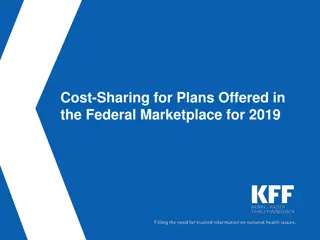
Diverse Applications of Linear Programming
Linear programming (LP) finds applications in various industries, from product mix optimization to transportation and flow capacity problems. Explore examples of LP problems such as product mix, blending, production scheduling, transportation, and flow capacity. Learn how LP models are developed and applied in different scenarios to optimize resources and maximize efficiency.
Download Presentation

Please find below an Image/Link to download the presentation.
The content on the website is provided AS IS for your information and personal use only. It may not be sold, licensed, or shared on other websites without obtaining consent from the author. If you encounter any issues during the download, it is possible that the publisher has removed the file from their server.
You are allowed to download the files provided on this website for personal or commercial use, subject to the condition that they are used lawfully. All files are the property of their respective owners.
The content on the website is provided AS IS for your information and personal use only. It may not be sold, licensed, or shared on other websites without obtaining consent from the author.
E N D
Presentation Transcript
Examples of LP Problems (1) 1. A Product Mix Problem A manufacturer has fixed amounts of different resources such as raw material, labor, and equipment. These resources can be combined to produce any one of several different products. The quantity of the ithresource required to produce one unit of the jthproduct is known. The decision maker wishes to produce the combination of products that will maximize total income.
Examples of LP Problems (2) 2. A Blending Problem Blending problems refer to situations in which a number of components (or commodities) are mixed together to yield one or more products. Typically, different commodities are to be purchased. Each commodity has known characteristics and costs. The problem is to determine how much of each commodity should be purchased and blended with the rest so that the characteristics of the mixture lie within specified bounds and the total cost is minimized.
Examples of LP Problems (3) 3. A Production Scheduling Problem A manufacturer knows that he must supply a given number of items of a certain product each month for the next n months. They can be produced either in regular time, subject to a maximum each month, or in overtime. The cost of producing an item during overtime is greater than during regular time. A storage cost is associated with each item not sold at the end of the month. The problem is to determine the production schedule that minimizes the sum of production and storage costs.
Examples of LP Problems (4) 4. A Transportation Problem A product is to be shipped in the amounts al, a2, ..., amfrom m shipping origins and received in amounts bl, b2, ..., bnat each of n shipping destinations. The cost of shipping a unit from the ithorigin to the jthdestination is known for all combinations of origins and destinations. The problem is to determine the amount to be shipped from each origin to each destination such that the total cost of transportation is a minimum.
Examples of LP Problems (5) 5. A Flow Capacity Problem One or more commodities (e.g., traffic, water, information, cash, etc.) are flowing from one point to another through a network whose branches have various constraints and flow capacities. The direction of flow in each branch and the capacity of each branch are known. The problem is to determine the maximum flow, or capacity of the network.
Developing LP Model (1) The variety of situations to which linear programming has been applied ranges from agriculture to zinc smelting. Steps Involved: Determine the objective of the problem and describe it by a criterion function in terms of the decision variables. Find out the constraints. Do the analysis which should lead to the selection of values for the decision variables that optimize the criterion function while satisfying all the constraints imposed on the problem.






















